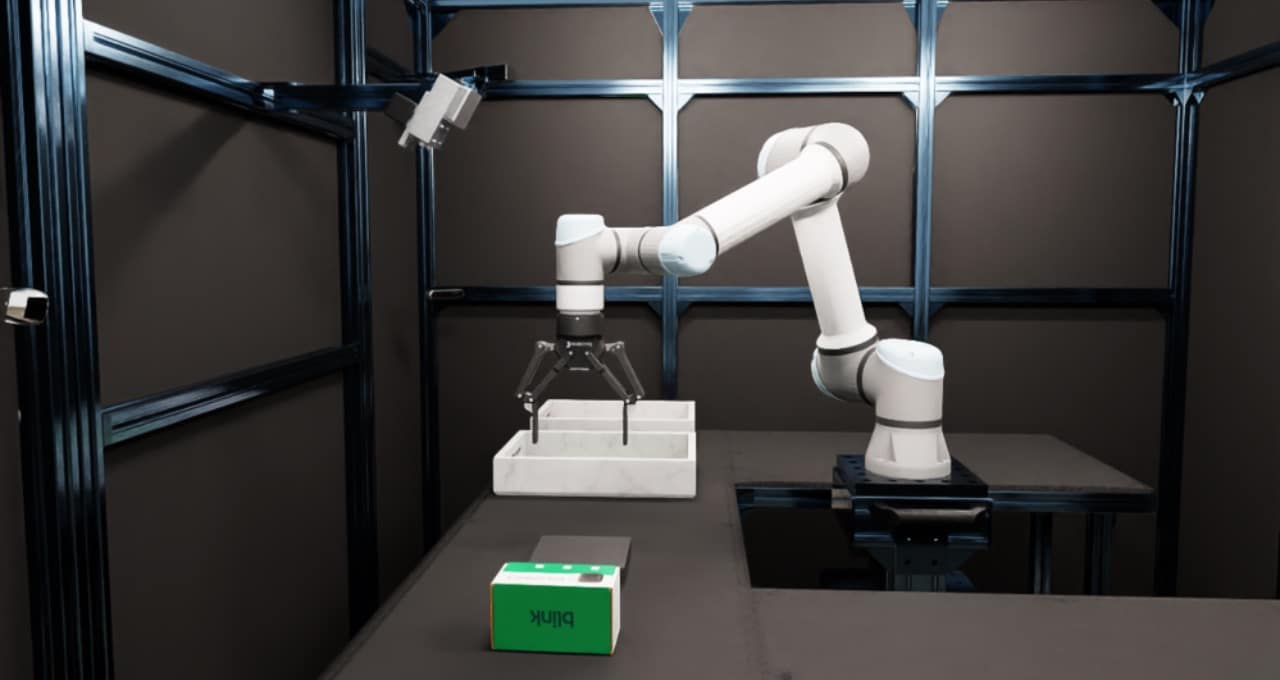Amazon Devices & Services has taken a significant step toward “zero-touch” manufacturing — without direct human intervention — by deploying a physical AI system in one of its factories built on NVIDIA digital twin technologies.
The solution combines hyperrealistic simulation, synthetic data generation, and autonomous planning to train robotic arms capable of inspecting products, auditing quality, and adapting production lines to new devices without hardware modifications.
From simulation to real deployment
Amazon’s strategy is “simulation-first,” meaning they train and validate all processes in virtual environments before implementing them in the physical world.
- NVIDIA Omniverse digital twins accurately recreate workstations and products.
- CAD models of each new device are imported into NVIDIA Isaac Sim to produce over 50,000 synthetic images that feed computer vision models.
- These datasets enable training defect detection and handling systems without physical prototypes.
Once training is validated, robots can switch products on the production line with just a software update, reducing costs and speeding up time-to-market.
NVIDIA ecosystem powering physical AI
Amazon leverages NVIDIA tools to orchestrate the entire workflow:
- NVIDIA Isaac ROS for planning robotic arm trajectories.
- cuMotion, a CUDA library that generates collision-free routes in milliseconds running on Jetson AGX Orin modules.
- nvblox for creating distance fields to support safe navigation.
- FoundationPose, a foundational model trained on 5 million synthetic images to estimate object position and orientation even without prior data.
Additionally, the system incorporates Amazon Bedrock to plan audit tasks based on technical specifications, with multimodal support (text, 3D design, material properties).
From specialized manufacturing to mass production
One key goal is to move toward generalized manufacturing, where a single production line can handle different products and processes without physical redesigns.
This involves:
- Full modularity in control software.
- The ability to simulate all possible scenarios.
- Minimizing the “sim-to-real” gap—the performance difference between simulation and real-world operation.
NVIDIA’s three-tier hardware for advanced robotics
Amazon’s case illustrates how NVIDIA structures physical AI across three hardware layers:
- Training: NVIDIA DGX supercomputers for foundational models and robotic policies.
- Simulation and synthetic data: NVIDIA Omniverse and Cosmos on RTX PRO servers, creating large environments and datasets.
- Real-time inference: NVIDIA Jetson Thor modules executing multimodal perception, reasoning, and control models on robots.
Digital twins for smart factories
NVIDIA’s “Mega” blueprint for industrial digital twins allows:
- Factory layout planning.
- Full operation simulation.
- Software-in-the-loop testing with virtual robot fleets.
This reduces deployment risks and costs, ensuring process changes are validated before physical implementation.
Economic and market impact
The market for physical AI and industrial robotics is rapidly expanding. Goldman Sachs predicts the humanoid robot segment will grow from $6 billion today to $38 billion by 2035. Simultaneously, contactless manufacturing promises to transform sectors such as:
- Consumer electronics
- Automotive
- Advanced logistics
- Healthcare and biotech
For Amazon, shortening launch cycles and reducing audit costs reinforce its competitive edge and lay the groundwork for integrating new product categories with minimal friction.
Companies already adopting this model
Beyond Amazon, manufacturers like Foxconn and logistics firms like Amazon Robotics are exploring digital twins to coordinate autonomous robots with human operators, integrating hundreds of sensors for real-time operation monitoring.
Developers such as Universal Robots, RGo Robotics, Boston Dynamics, and Fourier are using NVIDIA platforms to train collaborative robots, quadrupeds, and humanoids in simulated environments before deploying them physically.
FAQs
1. What is “zero-touch” manufacturing?
It’s a production model where key processes are managed by autonomous systems, eliminating direct human intervention in repetitive or critical tasks.
2. Why are synthetic data important?
They enable training AI models for rare or dangerous scenarios without exposing robots or operators to real risks.
3. What are the benefits of a digital twin in industry?
They allow validation of changes, process optimization, and failure prevention before physical implementation, cutting costs and time.
4. Is physical AI exclusive to manufacturing?
No. It’s also applied in logistics, transportation, healthcare, agriculture, and smart city management.

